Dometic DW6 User Manual

REFRIGERATION WINECOOLERS
DW6
EN
Thermoelectric drinks refrigerator
Operating manual . . . . . . . . . . . . . . . . . . . . 7
DE
Thermoelektrischer
Getränkekühlschrank
Bedienungsanleitung . . . . . . . . . . . . . . . . 17
FR
Réfrigérateur thermoélectrique pour boissons
Notice d’utilisation . . . . . . . . . . . . . . . . . . 27
ES
Sistema termoeléctrico de la nevera de bebidas
Instrucciones de uso . . . . . . . . . . . . . . . . . 37
PT
Frigorífico termoelétrico para bebidas
Manual de instruções . . . . . . . . . . . . . . . . 47
IT
NL
DA
SV
NO
FI
RU
PL
SK
CS
HU
Frigorifero termoelettrico per bevande
Istruzioni per l’uso . . . . . . . . . . . . . . . . . . 57
Thermo-elektrische drankenkoelkast
Gebruiksaanwijzing . . . . . . . . . . . . . . . . . 67
Termoelektrisk drikkevarekøleskab
Betjeningsvejledning . . . . . . . . . . . . . . . . 77
Termoelektrisk dryckeskyl
Bruksanvisning . . . . . . . . . . . . . . . . . . . . . 86
Termoelektrisk kjøleskap til drikke
Bruksanvisning . . . . . . . . . . . . . . . . . . . . . 95
Lämpösähköinen
juomajääkaappi
Käyttöohje. . . . . . . . . . . . . . . . . . . . . . . . 105
Термоэлектрический холодильный шкаф для хранения напитков
Инструкция по эксплуатации . . . . . . . . .114
Termoelektryczna lodówka na napoje
Instrukcja obsługi . . . . . . . . . . . . . . . . . . 124
Termoelektrická chladnička na nápoje
Návod na obsluhu . . . . . . . . . . . . . . . . . |
134 |
Termoelektrická chladnička na nápoje
Návod k obsluze . . . . . . . . . . . . . . . . . . . 144
Termoelektromos italhűtőszekrény
Használati utasítás . . . . . . . . . . . . . . . . . |
153 |
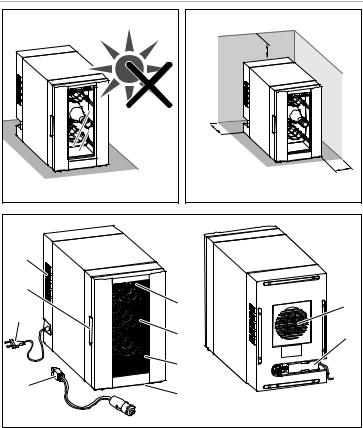
|
|
DW6 |
1 |
2 |
|
|
|
≥ 100 |
|
≥ 100 |
|
|
|
≥ 100 |
3 |
|
|
1 |
|
|
2 |
|
|
3 |
5 |
9 |
|
||
|
|
|
|
6 |
10 |
|
|
|
|
7 |
|
4 |
8 |
|
|
|
|
2 |
|
|

DW6
4 |
|
|
|
|
1 |
2 |
3 |
4 |
5 |
5 |
|
|
|
|
3
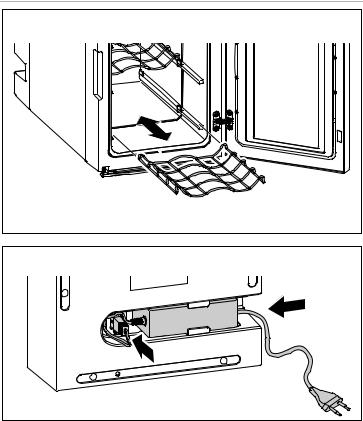
DW6
6 |
|
7 |
220 – 240 Vw |
|
1. |
|
2. |
4
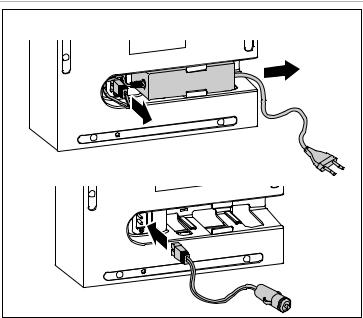
DW6
8 |
12 Vg |
|
2. |
|
1. |
|
3. |
5

DW6
9 |
≤ 6x |
> 6x |
|
||
≤ 35 cm |
|
|
6

DW6 |
Explanation of symbols |
Please read this operating manual carefully before starting the device. Keep it in a safe place for future reference. If the device is passed on to another person, this operating manual must be handed over to the user along with it.
The manufacturer cannot be held liable for damage resulting from improper usage or incorrect operation.
Table of contents
1 Explanation of symbols. . . . . . . . . . . . . . . . . . . . . . . . . . . . . . . . . . . . . . . . . . . . . . . . . . . . . . . 7 2 Safety instructions . . . . . . . . . . . . . . . . . . . . . . . . . . . . . . . . . . . . . . . . . . . . . . . . . . . . . . . . . . . 8 3 Scope of delivery . . . . . . . . . . . . . . . . . . . . . . . . . . . . . . . . . . . . . . . . . . . . . . . . . . . . . . . . . . . 9 4 Intended use . . . . . . . . . . . . . . . . . . . . . . . . . . . . . . . . . . . . . . . . . . . . . . . . . . . . . . . . . . . . . . 10 5 Technical description . . . . . . . . . . . . . . . . . . . . . . . . . . . . . . . . . . . . . . . . . . . . . . . . . . . . . . . 10 6 Using the refrigerator . . . . . . . . . . . . . . . . . . . . . . . . . . . . . . . . . . . . . . . . . . . . . . . . . . . . . . . 11 7 Troubleshooting . . . . . . . . . . . . . . . . . . . . . . . . . . . . . . . . . . . . . . . . . . . . . . . . . . . . . . . . . . . 14 8 Cleaning and maintenance . . . . . . . . . . . . . . . . . . . . . . . . . . . . . . . . . . . . . . . . . . . . . . . . . . 15 9 Warranty . . . . . . . . . . . . . . . . . . . . . . . . . . . . . . . . . . . . . . . . . . . . . . . . . . . . . . . . . . . . . . . . . 15 10 Disposal. . . . . . . . . . . . . . . . . . . . . . . . . . . . . . . . . . . . . . . . . . . . . . . . . . . . . . . . . . . . . . . . . . 15 11 Technical data . . . . . . . . . . . . . . . . . . . . . . . . . . . . . . . . . . . . . . . . . . . . . . . . . . . . . . . . . . . . . 16
1Explanation of symbols
DDANGER!
Safety instruction: Failure to observe this instruction will cause fatal or serious injury.
!WARNING!
Safety instruction: Failure to observe this instruction can cause fatal or serious injury.
!CAUTION!
Safety instruction: Failure to observe this instruction can lead to injury.
ANOTICE!
Failure to observe this instruction can cause material damage and impair the function of the product.
INOTE
Supplementary information for operating the product.
7
EN

Safety instructions |
DW6 |
2Safety instructions
2.1General safety
!WARNING!
•Do not operate the refrigerator if it is visibly damaged.
•This refrigerator may only be repaired by qualified personnel. Inadequate repairs may cause serious hazards.
•This refrigerator can be used by children aged 8 years or over, as well as by persons with diminished physical, sensory or mental capacities or a lack of experience and knowledge, providing they are supervised or have been instructed how to use the refrigerator safely and are aware of the resulting risks.
•Electrical devices are not toys.
Always keep and use the refrigerator out of the reach of children.
•Cleaning and user maintenance must not carried out by unsupervised children.
•Children must be supervised to ensure that they do not play with the refrigerator.
•If the power cable for this refrigerator is damaged, it must be replaced by the manufacturer, customer service or a similarly qualified person in order to prevent safety hazards.
•Do not store any explosive substances, such as spray cans with propellants, in the refrigerator.
!CAUTION!
•Disconnect the refrigerator from the mains
–Before cleaning and maintenance
–After use
•Food may only be stored in its original packaging or in suitable containers.
ANOTICE!
•Check that the voltage specification on the type plate is the same as that of the power supply.
•Only use the cable supplied to connect the refrigerator to the AC mains.
•The refrigerator is not suitable for transporting substances which are caustic or contain solvents.
•Never pull the plug out of the socket by the connection cable.
•Disconnect the refrigerator and other electric consumers from the battery before connecting the quick charging device.
•Only select operation with DC power supply (battery mode) if the vehicle engine is running and providing sufficient voltage to the light system, or if you are using a battery monitor.
8
EN

DW6 |
Scope of delivery |
2.2Operating the refrigerator safely
DDANGER!
• Do not touch exposed cables with your bare hands.
!CAUTION!
•Before starting the product, ensure that the power supply line and the plug are dry.
•Only use the refrigerator in a dry environment where it is protected from splashing water and high humidity.
•Do not place any objects on the refrigerator to avoid injury by falling objects when opening and closing the door.
ANOTICE!
•Do not use electrical devices inside the refrigerator unless they are recommended by the manufacturer for that purpose.
•Do not place the refrigerator near naked flames or other heat sources (heaters, direct sunlight, gas ovens etc.) (fig. 1, page 2).
•Danger of overheating!
Always ensure sufficient ventilation so that the heat generated during operation can
dissipate. Make sure that the refrigerator is sufficiently far away from walls and other objects so that the air can circulate (fig. 2, page 2).
•Ensure that the air vents are not covered.
•If you use more than two refrigerators, then maintain a distance of at least 50 cm between the two appliances.
•Do not fill the inner container with ice or fluid.
•Never immerse the refrigerator in water.
•Protect the refrigerator and the cable against heat and moisture.
3Scope of delivery
Quantity Description
1Refrigerator
1Power supply with AC connection cable
1DC connection cable
3Interior rack
1Operating manual
9
EN

Intended use |
DW6 |
4Intended use
The refrigerator is suitable for cooling bottles of drink.
The refrigerator is designed to operate on DC power supply and an AC power socket.
5Technical description
5.1Description
The refrigerator can be operated with an AC and DC power supply.
There are two buttons to set the temperature you require. A display shows both the desired and the current cooling temperature. The interior light can be switched as needed.
All materials used in the refrigerator are compatible for use with foodstuffs.
5.2Refrigerator components
No. in
3 Description fig. , page 2
1Air vent
2Door handle
3AC connection cable
4DC connection cable
5Control elements
6Interior rack
7Rails
8Condensation tray
9Fan
10 |
Mains adapter socket |
10
EN

DW6 |
Using the refrigerator |
The refrigerator has the following control elements:
No. in |
Description |
Description |
|
fig. 4, page 3 |
|||
|
|
||
|
|
|
|
1 |
POWER |
Switches the refrigerator on or off. |
|
|
|
|
|
2 |
LIGHT |
Switches the interior light on or off. |
|
|
|
|
|
3 |
Display |
Displays the temperature. |
|
|
|
|
|
4 |
TEMP + |
Increases the cooling temperature by 1 °C (up to |
|
|
|
+20 °C maximum). |
|
|
|
|
|
5 |
TEMP – |
Decreases the cooling temperature by 1 °C (up |
|
|
|
to +5 °C minimum). |
|
|
|
|
INOTE
You can switch the temperature display between Celsius and Fahrenheit. To do this, press the TEMP + and TEMP – for approx. three seconds at the same time.
6Using the refrigerator
INOTE
Before starting your new refrigerator for the first time, you should clean it inside and outside with a damp cloth for hygienic reasons (see chapter “Cleaning and maintenance” on page 15).
6.1Energy saving tips
•Choose a well ventilated location which is protected from direct sunlight.
•Use the ECO mode of the refrigerator if you want to set a higher energy efficiency and a limited cooling capacity of the refrigerator.
•Do not open the refrigerator more often than necessary.
•Do not leave the door open for longer than necessary.
11
EN

Using the refrigerator |
DW6 |
6.2Setting up the refrigerator
Make sure that the location is able to support the weight of the refrigerator as well as its maximum load.
Position the refrigerator horizontally.
Open the door of the refrigerator.
Slide the condensation tray at the bottom of the refrigerator into the corresponding holder (fig. 5, page 3).
Put the interior racks in the refrigerator so that they are on the pre-assembled side rails (fig. 6, page 4).
Close the door of the refrigerator.
6.3Connecting the refrigerator
DDANGER!
Never handle plugs and switches if you have wet hands.
Before starting up the refrigerator for the first time, check whether the operating voltage and the mains voltage match (see type plate).
Operating with AC power supply (fig. 7, page 4)
Insert the mains adapter into the power supply socket on the back of the refrigerator.
Connect the adapter plug to the socket on the back of the refrigerator.
Connect the mains plug to an AC socket.
Operating with DC power supply (fig. 8, page 5)
Remove the AC mains adapter from the power supply socket on the back of the refrigerator.
Connect the plug of the DC connection cable to the socket on the back of the refrigerator.
Connect the DC connection cable to the DC power supply.
6.4Using the refrigerator
ANOTICE!
Food should be stored in its original packaging or in suitable containers.
|
Press the POWER button for 3 seconds to switch on the refrigerator. |
|
The display (fig. 4 3, page 3) switches on and shows the current cooling temperature. |
|
Press the POWER button again for 3 seconds when you want to switch the refrigerator off. |
|
The display switches off. |
|
Press the LIGHT button for 3 seconds to switch the interior light on or off. |
12
EN

DW6 |
Using the refrigerator |
Setting the temperature
INOTE
The cooling performance can be affected by:
•The ambient temperature
•The number of bottles to be cooled
•The frequency with which the door is opened.
Press the TEMP – button to reduce the cooling temperature in increments of 1 °C.
Press the TEMP + button to increase the cooling temperature in increments of 1 °C.
The set temperature appears on the display and flashes twice. The current interior temperature of the refrigerator is then displayed.
Storing bottles (fig. 9, page 6)
Place the bottles horizontally on the grid shelves.
Place a maximum of two bottles on a shelf.
Make sure that the bottles do not exceed the maximum bottle length of 35 cm.
13
EN
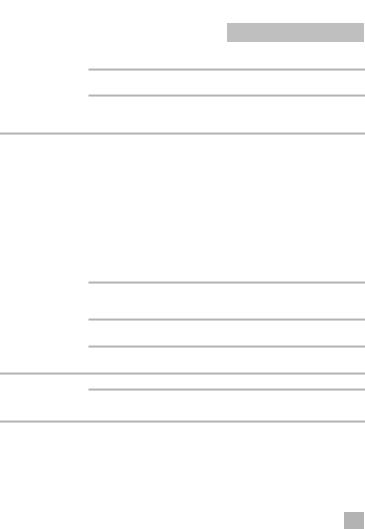
Troubleshooting |
DW6 |
7Troubleshooting
Problem |
Possible cause |
Suggested remedy |
|
|
|
The refrigerator does The power plug is not inserted. not work.
Connect the mains plug to an AC socket.
The DC connection cable is not |
Connect the DC connection cable |
inserted. |
to the DC power supply. |
The connection cable or plug is damaged.
Have the damaged connection cable or plug replaced by an electrician.
The refrigerator does The refrigerator is not level. |
Position the refrigerator |
|
not cool sufficiently. |
horizontally. |
|
|
|
|
|
The ambient temperature is too |
Lower the ambient temperature. |
|
high. |
|
|
|
|
|
The door is not closed properly. |
Close the door. |
|
|
|
|
|
Ensure that the door is not |
|
|
obstructed. |
|
|
|
|
The door has been opened too |
Only open the door when it is |
|
often. |
necessary. |
|
|
|
|
More than one power source is |
Only use one power source. |
|
being used. |
|
The gap between the wall at the side and back of the refrigerator is too narrow.
Keep the minimum distance to the side and back walls.
The temperature has not been set Set the temperature. correctly.
The air vents are dirty.
Clean the air vents with a soft cloth.
Condensation has built up on the outside of the refrigerator.
The condensation tray is full. |
Empty the condensation tray. |
The door does not close properly. Ensure that the door is not obstructed.
14
EN

DW6 |
Cleaning and maintenance |
8Cleaning and maintenance
ANOTICE!
Do not use abrasive cleaning agents or hard objects during cleaning as these can damage the refrigerator.
Clean the refrigerator regularly and as soon as it becomes dirty with a damp cloth. Switch the refrigerator off to do this.
INOTE
You can remove the interior racks to facilitate cleaning.
Make sure that no water drips into the seals. This can damage the electronics.
Wipe the refrigerator dry with a cloth after cleaning.
Regularly empty the condensation tray at the bottom of the refrigerator. To do this, open the door and pull the condensation tray completely out of the refrigerator (fig. 5, page 3).
9Warranty
The statutory warranty period applies. If the product is defective, please contact the manufacturer's branch in your country (see the back of the instruction manual for the addresses) or your retailer.
For repair and guarantee processing, please include the following documents when you send in the device:
•A copy of the receipt with purchasing date
•A reason for the claim or description of the fault
10 Disposal
Place the packaging material in the appropriate recycling waste bins wherever possible.
MIf you wish to finally dispose of the product, ask your local recycling centre or specialist dealer for details about how to do this in accordance with the applicable disposal regulations.
15
EN

Technical data |
DW6 |
|
11 |
Technical data |
|
|
|
|
|
|
DW6 |
|
|
|
Ref. no.: |
|
9105330356 |
|
|
|
Voltage: |
|
12 Vg |
|
|
220 to 240 Vw (with mains adapter) |
|
|
|
Power consumption: |
36 W (12 Vg), |
|
|
|
43 W (230 Vw), |
|
|
13 W (230 Vw) in ECO mode |
|
|
|
Cooling temperature range: |
+5 °C – +20 °C, |
|
|
|
up to 16 °C below the ambient temperature |
|
|
|
Category: |
Pantry |
|
|
|
|
Energy efficiency class: |
A |
|
|
|
|
Power consumption: |
114 kWh/per year |
|
|
|
|
Protection class: |
III |
|
|
|
|
Gross capacity: |
20 l |
|
|
|
|
Net capacity: |
18 l |
|
|
|
|
Maximum bottle length: |
35 cm |
|
|
|
|
Climatic class: |
N |
|
|
|
|
Noise emission: |
44 dB(A) |
|
|
|
|
Outer dimensions (L x W x H): |
515 x 266 x 415 mm |
|
|
|
|
Weight: |
|
Approx. 7.6 kg |
|
|
|
Inspection/certification: |
|
|
|
|
|
16
EN

DW6 |
Erklärung der Symbole |
Bitte lesen Sie diese Anleitung vor der Inbetriebnahme sorgfältig durch und bewahren Sie sie auf. Geben Sie sie im Falle einer Weitergabe des Kühlgerätes an den Nutzer weiter.
Der Hersteller haftet nicht für Schäden, die durch nicht bestimmungsgemäßen Gebrauch oder falsche Bedienung verursacht werden.
Inhaltsverzeichnis
1 Erklärung der Symbole . . . . . . . . . . . . . . . . . . . . . . . . . . . . . . . . . . . . . . . . . . . . . . . . . . . . . . 17 2 Sicherheitshinweise . . . . . . . . . . . . . . . . . . . . . . . . . . . . . . . . . . . . . . . . . . . . . . . . . . . . . . . . 18 3 Lieferumfang . . . . . . . . . . . . . . . . . . . . . . . . . . . . . . . . . . . . . . . . . . . . . . . . . . . . . . . . . . . . . .20 4 Bestimmungsgemäßer Gebrauch . . . . . . . . . . . . . . . . . . . . . . . . . . . . . . . . . . . . . . . . . . . . .20 5 Technische Beschreibung . . . . . . . . . . . . . . . . . . . . . . . . . . . . . . . . . . . . . . . . . . . . . . . . . . .20 6 Kühlgerät benutzen . . . . . . . . . . . . . . . . . . . . . . . . . . . . . . . . . . . . . . . . . . . . . . . . . . . . . . . .22 7 Störungsbeseitigung . . . . . . . . . . . . . . . . . . . . . . . . . . . . . . . . . . . . . . . . . . . . . . . . . . . . . . .24 8 Reinigung und Pflege . . . . . . . . . . . . . . . . . . . . . . . . . . . . . . . . . . . . . . . . . . . . . . . . . . . . . . .25 9 Gewährleistung . . . . . . . . . . . . . . . . . . . . . . . . . . . . . . . . . . . . . . . . . . . . . . . . . . . . . . . . . . .25 10 Entsorgung . . . . . . . . . . . . . . . . . . . . . . . . . . . . . . . . . . . . . . . . . . . . . . . . . . . . . . . . . . . . . . .25 11 Technische Daten . . . . . . . . . . . . . . . . . . . . . . . . . . . . . . . . . . . . . . . . . . . . . . . . . . . . . . . . . .26
1Erklärung der Symbole
DGEFAHR!
Sicherheitshinweis: Nichtbeachtung führt zu Tod oder schwerer Verletzung.
!WARNUNG!
Sicherheitshinweis: Nichtbeachtung kann zu Tod oder schwerer Verletzung führen.
!VORSICHT!
Sicherheitshinweis: Nichtbeachtung kann zu Verletzungen führen.
AACHTUNG!
Nichtbeachtung kann zu Materialschäden führen und die Funktion des Produktes beeinträchtigen.
IHINWEIS
Ergänzende Informationen zur Bedienung des Produktes.
17
DE

Sicherheitshinweise |
DW6 |
2Sicherheitshinweise
2.1Allgemeine Sicherheit
!WARNUNG!
•Wenn das Kühlgerät sichtbare Beschädigungen aufweist, dürfen Sie es nicht in Betrieb nehmen.
•Reparaturen an diesem Kühlgerät dürfen nur von Fachkräften durchgeführt werden. Durch unsachgemäße Reparaturen können erhebliche Gefahren entstehen.
•Dieser Kühlschrank kann von Kindern ab 8 Jahren und darüber sowie von Personen mit verringerten physischen, sensorischen oder mentalen Fähigkeiten oder Mangel an Erfahrung und Wissen benutzt werden, wenn sie beaufsichtigt oder bezüglich des sicheren Gebrauchs des Kühlschranks unterwiesen wurden und die daraus resultierenden Gefahren verstehen.
•Elektrogeräte sind kein Kinderspielzeug!
Verwahren und benutzen Sie das Kühlgerät außerhalb der Reichweite von Kindern.
•Reinigung und Benutzer-Wartung dürfen nicht von Kindern ohne Beaufsichtigung durchgeführt werden.
•Kinder sollten beaufsichtigt werden, um sicherzustellen, dass sie nicht mit dem Kühlgerät spielen.
•Wenn das Anschlusskabel dieses Kühlgeräts beschädigt wird, muss es durch den Hersteller, seinen Kundendienst oder eine ähnlich qualifizierte Person ersetzt werden, um Gefährdungen zu vermeiden.
•Lagern Sie keine explosionsfähigen Stoffe wie z. B. Sprühdosen mit brennbarem Treibgas im Kühlschrank.
!VORSICHT!
•Trennen Sie das Kühlgerät vom Netz
–vor jeder Reinigung und Pflege
–nach jedem Gebrauch
•Lebensmittel dürfen nur in Originalverpackungen oder geeigneten Behältern eingelagert werden.
AACHTUNG!
•Vergleichen Sie die Spannungsangabe auf dem Typenschild mit der vorhandenen Energieversorgung.
•Schließen Sie den Kühlschrank nur mit dem zugehörigen Anschlusskabel an das Wechselstromnetz an.
•Das Kühlgerät ist nicht geeignet für den Transport ätzender oder lösungsmittelhaltiger Stoffe.
•Ziehen Sie den Stecker nie am Anschlusskabel aus der Steckdose.
18
DE

DW6 |
Sicherheitshinweise |
•Trennen Sie Ihr Kühlgerät und andere Verbraucher von der Fahrzeugbatterie, bevor Sie ein Schnellladegerät anschließen.
•Wählen Sie den Betrieb mit Gleichstrom (Batteriebetrieb) nur, wenn der Fahrzeugmotor läuft und die Lichtmaschine ausreichende Spannung liefert oder wenn Sie einen Batteriewächter verwenden.
2.2Sicherheit beim Betrieb des Kühlgeräts
DGEFAHR!
• Fassen Sie nie mit bloßen Händen an blanke Leitungen.
!VORSICHT!
•Achten Sie vor der Inbetriebnahme darauf, dass Zuleitung und Stecker trocken sind.
•Benutzen Sie das Kühlgerät ausschließlich in einer trockenen Umgebung, wo es vor Spritzwasser und starker Feuchtigkeit geschützt ist.
•Legen Sie keine Gegenstände auf dem Kühlgerät ab, um Verletzungen beim Öffnen und Schließen der Tür durch herunterfallende Gegenstände zu vermeiden.
AACHTUNG!
•Benutzen Sie keine Elektrogeräte innerhalb des Kühlschranks, außer wenn diese Elektrogeräte vom Hersteller dafür empfohlen werden.
•Stellen Sie das Kühlgerät nicht in der Nähe von offenen Flammen oder anderen Wärmequellen (Heizung, starke Sonneneinstrahlung, Gasöfen usw.) ab (Abb. 1, Seite 2).
•Überhitzungsgefahr!
Achten Sie stets darauf, dass beim Betrieb entstehende Wärme ausreichend abgeführt werden kann. Sorgen Sie dafür, dass das Kühlgerät in ausreichendem
Abstand zu Wänden oder Gegenständen steht, sodass die Luft zirkulieren kann (Abb. 2, Seite 2).
•Achten Sie darauf, dass die Lüftungsöffnungen nicht abgedeckt werden.
•Wenn Sie mehr als zwei Kühlgeräte einsetzen, dann halten Sie einen Abstand von mindestens 50 cm zwischen zwei Kühlgeräten ein.
•Füllen Sie keine Flüssigkeiten oder Eis in den Innenbehälter.
•Tauchen Sie das Kühlgerät nie in Wasser.
•Schützen Sie das Kühlgerät und die Kabel vor Hitze und Nässe.
19
DE
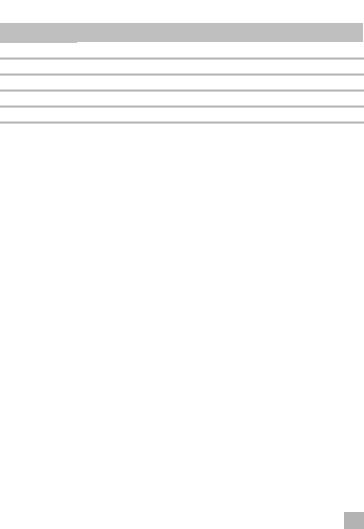
Lieferumfang |
DW6 |
3Lieferumfang
Menge Bezeichnung
1Kühlgerät
1Netzteil mit Wechselstrom-Anschlusskabel
1Gleichstrom-Anschlusskabel
3Innenroste
1Bedienungsanleitung
4Bestimmungsgemäßer Gebrauch
Das Kühlgerät eignet sich zum Kühlen von Getränkeflaschen.
Der Kühlschrank ist für den Betrieb am Gleichstromnetz und an einer Wechselstromsteckdose ausgelegt.
5Technische Beschreibung
5.1Beschreibung
Das Kühlgerät kann mit Wechselstrom und Gleichstrom betrieben werden.
Über zwei Taster kann die gewünschte Temperatur eingestellt werden. Ein Display zeigt sowohl die gewünschte als auch die tatsächliche Kühltemperatur an. Bei Bedarf kann die Innenbeleuchtung eingeschaltet werden.
Alle im Kühlgerät verwendeten Materialien sind unbedenklich für Lebensmittel.
20
DE

DW6 |
Technische Beschreibung |
5.2Bestandteile des Kühlschranks
Pos. in
3 Beschreibung
Abb. , Seite 2
1 |
Lüftungsöffnung |
2 |
Türgriff |
|
|
3 |
Wechselstrom-Anschlusskabel |
|
|
4 |
Gleichstrom-Anschlusskabel |
|
|
5 |
Bedienelemente |
|
|
6 |
Innenroste |
|
|
7 |
Schienen |
|
|
8 |
Kondenswasserbehälter |
|
|
9 |
Lüfter |
|
|
10 |
Netzteilaufnahme |
|
|
Der Kühlgerät hat folgende Bedienelemente:
Pos. in |
Bezeichnung |
Beschreibung |
|
Abb. 4, Seite 3 |
|||
|
|
||
|
|
|
|
1 |
POWER |
Schaltet das Kühlgerät ein oder aus. |
|
|
|
|
|
2 |
LIGHT |
Schaltet die Innenbeleuchtung ein oder aus. |
|
|
|
|
|
3 |
Display |
Zeigt die Temperatur an. |
|
|
|
|
|
4 |
TEMP + |
Erhöht die gewünschte Kühltemperatur um |
|
|
|
jeweils 1 °C (bis maximal +20 °C). |
|
|
|
|
|
5 |
TEMP – |
Verringert die gewünschte Kühltemperatur um |
|
|
|
jeweils 1 °C (bis minimal +5 °C). |
|
|
|
|
IHINWEIS
Sie können zur Temperaturanzeige zwischen den Werten für °Celsius und °Fahrenheit wählen. Drücken Sie hierzu ca. drei Sekunden lang gleichzeitig die Tasten TEMP + und TEMP –.
21
DE

Kühlgerät benutzen |
DW6 |
6Kühlgerät benutzen
IHINWEIS
Bevor Sie das neue Kühlgerät in Betrieb nehmen, sollten Sie es aus hygienischen Gründen innen und außen mit einem feuchten Tuch reinigen (siehe Kapitel „Reinigung und Pflege“ auf Seite 25).
6.1Tipps zum Energiesparen
•Wählen Sie einen gut belüfteten und vor Sonnenstrahlen geschützten Einsatzort.
•Wenn Sie eine erhöhte Energieeffizienz und eine begrenzte Kühlleistung für das Kühlgerät einrichten wollen, nutzen Sie den ECO-Modus des Kühlgerätes.
•Öffnen Sie das Kühlgerät nicht häufiger als nötig.
•Lassen Sie die Tür nicht länger offen stehen als nötig.
6.2Kühlgerät aufstellen
Stellen Sie sicher, dass der Aufstellort das Gewicht des Kühlgeräts plus maximaler Befüllung tragen kann.
Stellen Sie das Kühlgerät waagerecht auf.
Öffnen Sie die Tür des Kühlgeräts.
Schieben Sie den Kondenswasserbehälter unterhalb des Kühlgeräts in die entsprechende Aufnahme ein (Abb. 5, Seite 3).
Setzen Sie die Innenroste so in das Kühlgerät ein, dass die Innenroste auf den vormontierten seitlichen Schienen liegen (Abb. 6, Seite 4).
Schließen Sie die Tür des Kühlgeräts.
6.3Kühlgerät anschließen
DGEFAHR!
Hantieren Sie nie mit Steckern und Schaltern, wenn Sie nasse Hände haben.
Kontrollieren Sie vor Inbetriebnahme des Kühlgeräts, ob die Betriebsspannung und die Netzspannung übereinstimmen (siehe Typenschild).
Betrieb mit Wechselstrom (Abb. 7, Seite 4)
Schieben Sie das Netzteil in die Netzteilaufnahme auf der Rückseite des Kühlgeräts.
Verbinden Sie den Adapterstecker mit der Buchse auf der Rückseite des Kühlgeräts.
Schließen Sie den Netzstecker an eine Wechselstromsteckdose an.
22
DE

DW6 |
Kühlgerät benutzen |
Betrieb mit Gleichstrom (Abb. 8, Seite 5)
Entfernen Sie das Wechselstrom-Netzteil aus der Netzteilaufnahme auf der Rückseite des Kühlgeräts.
Verbinden Sie den Stecker des Gleichstrom-Anschlusskabels mit der Buchse auf der Rückseite des Kühlgeräts.
Schließen Sie das Gleichstrom-Anschlusskabel an ein Gleichstromnetz an.
6.4Kühlgerät benutzen
AACHTUNG!
Lebensmittel sollten nur in Originalverpackungen oder geeigneten Behältern eingelagert werden.
Schalten Sie das Kühlgerät ein, indem Sie die Taste POWER 3 Sekunden lang drücken.
Das Display (Abb. 4 3, Seite 3) schaltet sich ein und zeigt die aktuelle Kühltemperatur an.
Wenn Sie das Kühlgerät ausschalten möchten, drücken Sie die Taste POWER erneut für 3 Sekunden.
Das Display schaltet sich aus.
Schalten Sie die Innenbeleuchtung ein oder aus, indem Sie die Taste LIGHT 3 Sekunden lang drücken.
Temperatur einstellen
IHINWEIS
Die Kühlleistung kann beeinflusst werden von
•der Umgebungstemperatur,
•der Menge der zu kühlenden Flaschen,
•der Häufigkeit der Türöffnungen.
Drücken Sie die Taste TEMP –, um die gewünschte Kühltemperatur schrittweise um 1 °C zu verringern.
Drücken Sie die Taste TEMP +, um die gewünschte Kühltemperatur schrittweise um 1 °C zu erhöhen.
Die eingestellte Temperatur wird im Display zweimal blinkend angezeigt. Anschließend wird die aktuelle Innenraumtemperatur des Kühlgeräts angezeigt.
Getränkeflaschen einlagern (Abb. 9, Seite 6)
Legen Sie die Getränkeflaschen horizontal auf die Innenroste.
Legen Sie maximal zwei Getränkeflaschen auf ein Innenrost.
Stellen Sie sicher, dass die Getränkeflaschen die maximale Flaschenlänge von 35 cm nicht überschreiten.
23
DE

Störungsbeseitigung |
DW6 |
7Störungsbeseitigung
Störung |
Mögliche Ursache |
Lösungsvorschlag |
|
|
|
|
|
Das Kühlgerät |
Der Netzstecker ist nicht |
Stecken Sie den Netzstecker in |
|
funktioniert nicht. |
eingesteckt. |
eine Wechselstromsteckdose. |
|
|
|
|
|
|
Das Gleichstrom-Anschlusskabel |
Schließen Sie das Gleichstrom- |
|
|
ist nicht eingesteckt. |
Anschlusskabel an ein Gleich- |
|
|
|
stromnetz an. |
|
|
|
|
|
|
Die Anschlusskabel oder Stecker |
Lassen Sie beschädigte Anschluss- |
|
|
sind beschädigt. |
kabel oder Stecker von einem |
|
|
|
Fachmann austauschen. |
|
|
|
|
|
Das Kühlgerät kühlt |
Das Kühlgerät steht nicht |
Stellen Sie das Kühlgerät |
|
nicht ausreichend. |
waagerecht. |
waagerecht auf. |
|
|
|
|
|
|
Die Umgebungstemperatur ist zu |
Sorgen Sie für eine niedrigere |
|
|
hoch. |
Umgebungstemperatur. |
|
|
|
|
|
|
Die Tür ist nicht korrekt |
Schließen Sie die Tür. |
|
|
geschlossen. |
|
|
|
Stellen Sie sicher, dass die Tür |
||
|
|
||
|
|
nicht blockiert wird. |
|
|
|
|
|
|
Die Tür wurde zu oft geöffnet. |
Öffnen Sie die Tür nur, wenn es |
|
|
|
notwendig ist. |
|
|
|
|
|
|
Es wird mehr als eine |
Verwenden Sie nur eine |
|
|
Energiequelle genutzt. |
Energiequelle. |
|
|
|
|
|
|
Der Wandabstand neben und |
Halten Sie den Mindestabstand zu |
|
|
hinter dem Kühlgerät ist zu gering. |
den Seitenwänden und zur |
|
|
|
Rückwand ein. |
|
|
|
|
|
|
Die Temperatur ist nicht korrekt |
Stellen Sie die Temperatur ein. |
|
|
eingestellt. |
|
|
|
|
|
|
|
Die Lüftungsöffnungen sind |
Reinigen Sie die Lüftungs- |
|
|
verschmutzt. |
öffnungen mit einem weichen |
|
|
|
Tuch. |
|
|
|
|
|
Es befindet sich |
Der Kondenswasserbehälter ist |
Leeren Sie den Kondenswasser- |
|
Kondenswasser |
voll. |
behälter. |
|
außerhalb des |
|
|
|
Die Tür schließt nicht richtig. |
Stellen Sie sicher, dass die Tür |
||
Kühlgeräts. |
|||
|
nicht blockiert wird. |
||
|
|
||
|
|
|
24
DE

DW6 |
Reinigung und Pflege |
8Reinigung und Pflege
AACHTUNG!
Verwenden Sie zur Reinigung keine scharfen Reinigungsmittel oder harten Gegenstände, da diese das Kühlgerät beschädigen können.
Reinigen Sie das Kühlgerät regelmäßig und sobald es verschmutzt ist mit einem feuchten Tuch. Schalten Sie das Kühlgerät hierzu aus.
IHINWEIS
Sie können die Innenroste entnehmen, um sie leichter zu reinigen.
Achten Sie darauf, dass kein Wasser in die Dichtungen tropft. Dies kann die Elektronik beschädigen.
Wischen Sie das Kühlgerät nach dem Reinigen mit einem Tuch trocken.
Leeren Sie regelmäßig den Kondenswasserbehälter an der Unterseite des Kühlgeräts. Ziehen
Sie hierzu, bei geöffneter Tür, den Kondenswasserbehälter vollständig aus dem Kühlgerät (Abb. 5, Seite 3).
9Gewährleistung
Es gilt die gesetzliche Gewährleistungsfrist. Sollte das Produkt defekt sein, wenden Sie sich bitte an die Niederlassung des Herstellers in Ihrem Land (Adressen siehe Rückseite der Anleitung) oder an Ihren Fachhändler.
Zur Reparaturbzw. Gewährleistungsbearbeitung müssen Sie folgende Unterlagen mitschicken:
•eine Kopie der Rechnung mit Kaufdatum,
•einen Reklamationsgrund oder eine Fehlerbeschreibung.
10 Entsorgung
Geben Sie das Verpackungsmaterial möglichst in den entsprechenden Recycling-Müll.
MWenn Sie das Produkt endgültig außer Betrieb nehmen, informieren Sie sich bitte beim nächsten Recyclingcenter oder bei Ihrem Fachhändler über die zutreffenden Entsorgungsvorschriften.
25
DE

Technische Daten |
DW6 |
|
11 |
Technische Daten |
|
|
|
|
|
|
DW6 |
|
|
|
Art.-Nr.: |
|
9105330356 |
|
|
|
Anschlussspannung: |
12 Vg |
|
|
|
220 bis 240 Vw (mit Netzteil) |
|
|
|
Leistungsaufnahme: |
36 W (12 Vg), |
|
|
|
43 W (230 Vw), |
|
|
13 W (230 Vw) im ECO-Modus |
|
|
|
Kühltemperaturbereich: |
+5 °C – +20 °C, |
|
|
|
bis 16 °C unter Umgebungstemperatur |
|
|
|
Kategorie: |
Pantry |
|
|
|
|
Energieeffizienzklasse: |
A |
|
|
|
|
Energieverbrauch: |
114 kWh/annum |
|
|
|
|
Schutzklasse: |
III |
|
|
|
|
Bruttoinhalt: |
20 l |
|
|
|
|
Nettoinhalt: |
18 l |
|
|
|
|
Maximale Flaschenlänge: |
35 cm |
|
|
|
|
Klimaklasse: |
N |
|
|
|
|
Schallemission: |
44 dB(A) |
|
|
|
|
Außenabmessungen (L x B x H): |
515 x 266 x 415 mm |
|
|
|
|
Gewicht: |
ca. 7,6 kg |
|
|
|
|
Prüfung/Zertifikat: |
|
|
|
|
|
26
DE

DW6
Veuillez lire ce manuel avec attention avant de mettre l’appareil en service. Conservez ensuite ce manuel. En cas de passer de l’appareil, veuillez le transmettre au nouvel acquéreur.
Le fabricant décline toute responsabilité en cas de dommages provoqués par une utilisation non-conforme de l'appareil ou par des erreurs de manipulation.
Sommaire
1 Explication des symboles . . . . . . . . . . . . . . . . . . . . . . . . . . . . . . . . . . . . . . . . . . . . . . . . . . . .28 2 Consignes de sécurité . . . . . . . . . . . . . . . . . . . . . . . . . . . . . . . . . . . . . . . . . . . . . . . . . . . . . .28 3 Pièces fournies . . . . . . . . . . . . . . . . . . . . . . . . . . . . . . . . . . . . . . . . . . . . . . . . . . . . . . . . . . . .30 4 Usage conforme . . . . . . . . . . . . . . . . . . . . . . . . . . . . . . . . . . . . . . . . . . . . . . . . . . . . . . . . . . .30 5 Description technique . . . . . . . . . . . . . . . . . . . . . . . . . . . . . . . . . . . . . . . . . . . . . . . . . . . . . .30 6 Utilisation de la glacière . . . . . . . . . . . . . . . . . . . . . . . . . . . . . . . . . . . . . . . . . . . . . . . . . . . . .32 7 Dépannage . . . . . . . . . . . . . . . . . . . . . . . . . . . . . . . . . . . . . . . . . . . . . . . . . . . . . . . . . . . . . . .34 8 Entretien et nettoyage . . . . . . . . . . . . . . . . . . . . . . . . . . . . . . . . . . . . . . . . . . . . . . . . . . . . . .35 9 Garantie. . . . . . . . . . . . . . . . . . . . . . . . . . . . . . . . . . . . . . . . . . . . . . . . . . . . . . . . . . . . . . . . . .35 10 Retraitement . . . . . . . . . . . . . . . . . . . . . . . . . . . . . . . . . . . . . . . . . . . . . . . . . . . . . . . . . . . . . .35 11 Caractéristiques techniques. . . . . . . . . . . . . . . . . . . . . . . . . . . . . . . . . . . . . . . . . . . . . . . . . .36
27
FR

Explication des symboles |
DW6 |
1Explication des symboles
DDANGER !
Consigne de sécurité : le non-respect de ces consignes entraîne la mort ou de graves blessures.
!AVERTISSEMENT !
Consigne de sécurité : le non-respect de ces consignes peut entraîner la mort ou de graves blessures.
!ATTENTION !
Consigne de sécurité : le non-respect de ces consignes peut entraîner des blessures.
AAVIS !
Le non-respect de ces consignes peut entraîner des dommages matériels et des dysfonctionnements du produit.
IREMARQUE
Informations complémentaires sur l'utilisation du produit.
2Consignes de sécurité
2.1Consignes générales de sécurité
!AVERTISSEMENT !
•Si l'appareil de réfrigération présente des dégâts visibles, vous ne devez pas le mettre en service.
•Seul un professionnel est habilité à réparer l'équipement de réfrigération. Toute réparation mal effectuée risquerait d'entraîner de graves dangers.
•Les enfants âgés de 8 ans et plus ainsi que les personnes ayant des déficiences physiques, sensorielles ou mentales ou un manque d'expérience ou de connaissances peuvent utiliser ce réfrigérateur à condition d'être sous surveillance ou d'avoir reçu des instructions concernant l'utilisation du réfrigérateur en toute sécurité et de comprendre les dangers qui en résultent.
•Les appareils électriques ne sont pas des jouets pour enfants.
Placez et utilisez l'appareil hors de leur portée.
•Le nettoyage et la maintenance ne doivent pas être effectués par des enfants sans surveillance.
•Les enfants doivent être surveillés pour s'assurer qu'ils ne jouent pas avec l'appareil de réfrigération.
28
FR

DW6 |
Consignes de sécurité |
•Si le câble de raccordement de l'appareil de réfrigération est endommagé, il doit être remplacé par le fabricant, son service après-vente ou une personne de qualification similaire, afin d'éviter tout danger.
•Ne stockez aucune substance explosive (comme des aérosols contenant des gaz combustibles, par exemple) dans le réfrigérateur.
!ATTENTION !
•Débranchez l'appareil de réfrigération du secteur
–avant tout nettoyage et entretien
–après chaque utilisation
•Les produits alimentaires doivent être conservés dans leurs emballages originaux ou dans des récipients appropriés.
AAVIS !
•Vérifiez que la tension indiquée sur la plaque signalétique correspond à l'alimentation électrique dont vous disposez.
•Pour raccorder le réfrigérateur au courant alternatif, veuillez utiliser exclusivement le câble de raccordement correspondant.
•N'utilisez pas le réfrigérateur pour le transport de produits corrosifs ou de solvants !
•Ne tirez jamais sur le câble de raccordement pour sortir la fiche de la prise.
•Débranchez de la batterie l'appareil de réfrigération et les autres consommateurs d'énergie avant de raccorder un chargeur rapide.
•Sélectionnez le fonctionnement au courant continu (fonctionnement sur batterie) uniquement lorsque le moteur du véhicule tourne et lorsque la dynamo fournit suffisamment de tension, ou lorsque vous utilisez un protecteur de batterie.
2.2Sécurité d'exploitation de l'équipement de réfrigération
DDANGER !
• Ne touchez jamais les lignes électriques dénudées avec les mains nues.
!ATTENTION !
•Avant de mettre l'appareil en service, assurez-vous que la ligne d'alimentation électrique et le connecteur sont secs.
•Utilisez le réfrigérateur uniquement dans un environnement sec où il est protégé contre les projections d'eau et une humidité élevée.
•Ne placez pas d'objets sur le réfrigérateur afin d'éviter des blessures dues à la chute d'objets lors de l'ouverture et de la fermeture de la porte.
AAVIS !
•N'exploitez aucun appareil électrique à l'intérieur du réfrigérateur, sauf si le fabricant le recommande.
•Ne placez pas l’appareil de réfrigération près de flammes ou d'autres sources de chaleur (chauffage, rayons solaires, fours à gaz, etc.) (fig. 1, page 2).
29
FR

Pièces fournies |
DW6 |
•Risque de surchauffe !
Veillez toujours à ce que la chaleur produite lors du fonctionnement puisse se
dissiper suffisamment. Veillez à ce que la glacière se trouve à distance suffisante des murs ou des objets, de sorte que l'air puisse circuler (fig. 2, page 2).
•Assurez-vous que les ouvertures d'aération ne sont pas recouvertes.
•Si vous utilisez plus de deux appareils de refroidissement, maintenez une distance d'au moins 50 cm entre deux appareils.
•Ne remplissez pas le bac intérieur de substances liquides ou de glace.
•Ne plongez jamais l'appareil de réfrigération dans l'eau.
•Tenez l'appareil de réfrigération et les câbles à l'abri de la chaleur et de l'humidité.
3Pièces fournies
Quantité Désignation
1Glacière
1 |
Bloc secteur avec câble de raccordement au courant alternatif |
1 |
Câble de raccordement au courant continu |
|
|
3 |
Grilles intérieures |
|
|
1 |
Notice d'utilisation |
|
|
4Usage conforme
L'appareil est conçu pour la réfrigération de bouteilles de boisson.
Le réfrigérateur est conçu pour fonctionner sur courant continu et sur une prise d'alimentation secteur.
5Description technique
5.1Description
La glacière peut être alimentée en courant alternatif et en courant continu.
Deux touches permettent de sélectionner la température souhaitée. L'affichage indique la valeur de température souhaitée ainsi que la valeur de température présentée par l'appareil. L'éclairage intérieur peut être allumé si nécessaire.
Tous les matériaux utilisés lors de la construction de la glacière n'altèrent pas la qualité des aliments.
30
FR
